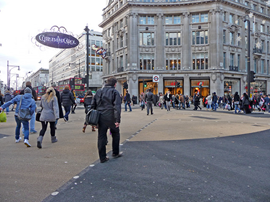Southwark Council's programme of rooftop housing development

|
Contents |
[edit] Introduction
In October 2019, Southwark Council outlined its plans to introduce a set of principles, or promises to residents, to guide a proposed bespoke programme of rooftop development aiming to provide vital new council housing.
[edit] Tackling the housing shortage
Southwark faces an acute housing need with over 12,000 families on the waiting list and over 2,000 children currently living in temporary accommodation. The council has one of the most ambitious council housebuilding programmes in the country with a commitment to build 11,000 brand new council homes by 2043. Over 600 council homes have already been delivered, and more are on the horizon, but with available land in short supply the council is looking at new and innovative ways to build more housing. This includes a special focus on unlocking potentially hundreds of new homes with upward extensions on existing blocks. But the council is also aware of the impact this will have on people living in the affected buildings and has drafted a series of principles and commitments to maximise the benefits and minimise the impacts on residents.
Cllr Leo Pollak, Cabinet Member for Social Regeneration, Great Estates and New Homes, said:
“Rooftop housing has a great potential to not only deliver hundreds of high-quality new council homes and improve existing homes, but also to help decarbonise the development supply chain.
“We’ve spoken to residents about the opportunities and challenges linked to rooftop housing and the kind of preferences that were raised were things like their desire to remain on the top floor, being prioritised for the new homes and improvements being made to the rest of the block.
“Unlocking a new dimension of council housing supply like this is not going to be straightforward, but we are driven by the potential for hundreds, potentially thousands of new council homes in our borough. We plan to offer a quicker on-site construction time by doing most of the building off-site, [giving] first refusal on the new homes to those living underneath, and improvements to the existing block, with any costs associated with the new homes – such as a new roof, lift and landscaping – non-rechargeable to leaseholders.
“We are also developing an accompanying rooftop design guide that will detail some of the best options to complement and enhance an existing block well, maximise internal living and amenity space and solutions for connecting new homes to existing services.”
[edit] Maximising offsite construction
One of the ways the council is promising to minimise the impact on existing residents is to build rooftop homes in a modular form, off-site and crane them onto adapted blocks, significantly shortening the time construction is on site. Residents living immediately underneath the new homes will be given the first opportunity to move into them, so people previously living on the top floor will have the chance to stay on the top floor and in a brand-new home. The vacated properties will then be made available to those on the waiting list.
[edit] About this article
This article was previously published on the IHBC website in October 2019 under the title: ‘Southwark Council plans new principles for bespoke programme of rooftop development’. It can be accessed HERE.
Other articles by IHBC on Designing Buildings Wiki can be accessed HERE.
[edit] Related articles on Designing Buildings Wiki
IHBC NewsBlog
National Audit Office (NAO) says Government building maintenance backlog is at least £49 billion
The public spending watchdog will need to consider the best way to manage its assets to bring property condition to a satisfactory level.
IHBC Publishes C182 focused on Heating and Ventilation
The latest issue of Context explores sustainable heating for listed buildings and more.
Notre-Dame Cathedral of Paris reopening: 7-8 December
The reopening is in time for Christmas 2025.
Stirling Prize-winning Salford building to be demolished
The Centenary Building will be bulldozed as part of the wider £2.5bn Crescent regeneration project
Volunteers work to transform 100-year-old ‘hidden’ building into bothy
The building, named Druimnashallag, is located southeast of Oban.
The new ‘Arches for HERs’ Demo site, from the Getty Conservation Institute via HE
It shows how organisations responsible for historic environment records (HER) management can benefit from its powerful features.
ICOMOS-CIF 2024 Symposium celebrates 40th anniversary in Venice
It aims to critically review current practices and theories of conservation of built heritage around the world, and more.
HES establishes new national centre for retrofit of traditional buildings
HES plans to develop the centre follows £1m of funding from UKRI Arts and Humanities Research Council.
High Court rejects oral appeal against tower block decision in historic Bloomsbury
The request was for a full Judicial Review hearing against Camden Council’s approval of a 74m-high tower block in Bloomsbury.
Mayor of London and Government announce bold plans to transform Oxford Street
Plans include turning the road into a traffic-free pedestrianised avenue, creating a beautiful public space.

















Comments
Interesting article.
I would check out this new startup called Skyroom (https://skyroom.london/). It's mission is to provide London's key urban workers with high-quality, low-cost, eco-friendly homes, near where they work, so that they have the opportunity to thrive in the cities they support.
Thanks for your feedback. That looks a very interesting site. Overbuild is not new of course and many firms and other bodies have advanced it over the years.But that's the first dedicated site to the concept we've seen - Ed.